The LFG called life
LFG: looking for game. An ad-hoc scheme, often forum-esque, where strangers looking to play an online game that lacks matchmaking find each other and coordinate starting a game.
No matter how famous they get, the forward-thinking artists of today aren’t just looking for fans or passive consumers of their work, they’re looking for potential collaborators, or co-conspirators. These artists acknowledge that good work isn’t created in a vacuum, and that the experience of art is always a two-way street, incomplete without feedback. These artists hang out online and answer questions. They ask for reading recommendations. They chat with fans about the stuff they love.
– Austin Kleon, Show Your Work!
This is how I found so many of my online pals and past/future collaborators. The wonder of blogs, “web 2.0”, and then Twitter. We were out there posting, finding tribes, and, occasionally teammates.
You have more writing material than you think
Jim Nielsen, Blogging and Composting:
But as a byproduct of whatever you’re building you undoubtedly learned, observed, or cursed at something along the way.
And if you blog, you can make good use of that experience!
Show up (almost) every day, stack some drafts. Write down what you learned or what surprised you or what amazed you. Sooner than you know it, you’ve got a thing going. Maybe even a thesis or long-running schtick. Works for any kind of writing, not just blogs. 📈
Weekend in Portland
Day two: breakfast, books, public transit! Tina Fey and Amy Poehler (surprise guest: Maya Rudolph!) put on an excellent show. (Not pictured: very, very cold.)

Grits ’n Gravy. Enjoyed.

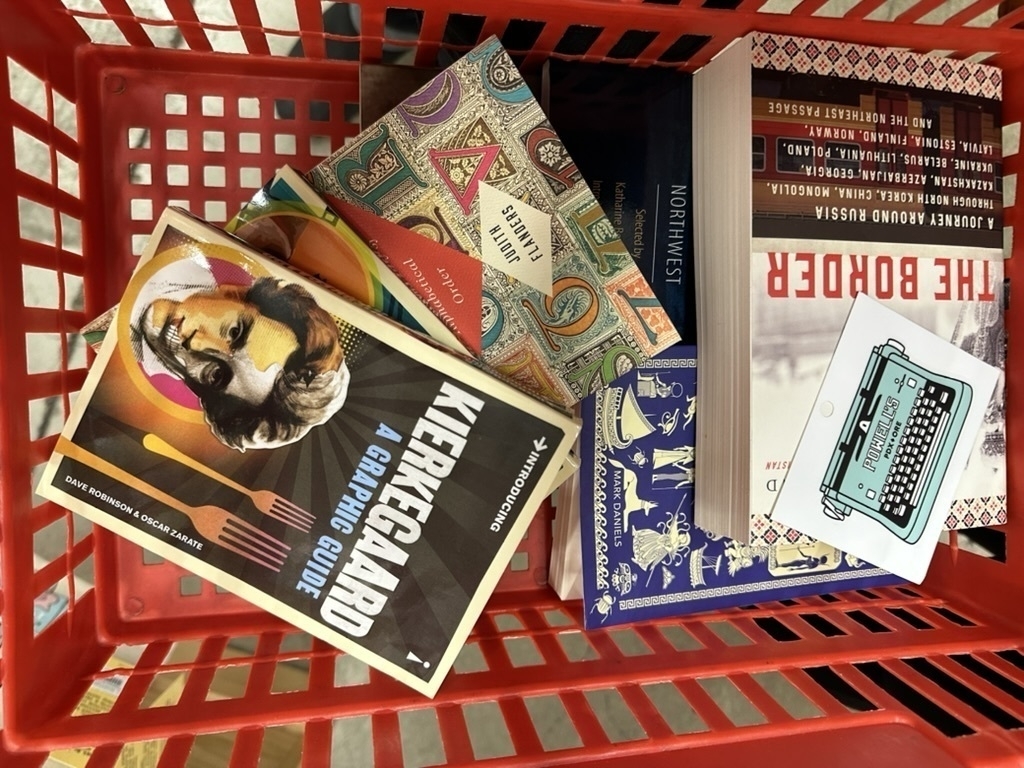
Powell’s Books. Enjoyed, transacted.

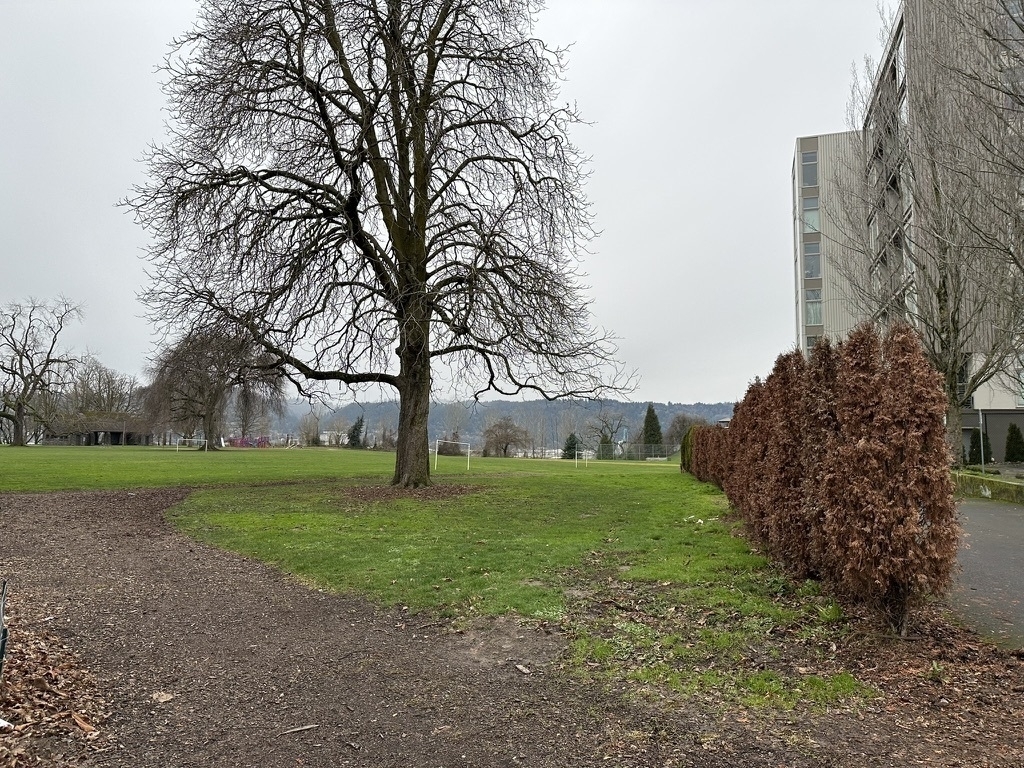
The light rail line back to our Airbnb. It’s nice to get around sans car now and then!
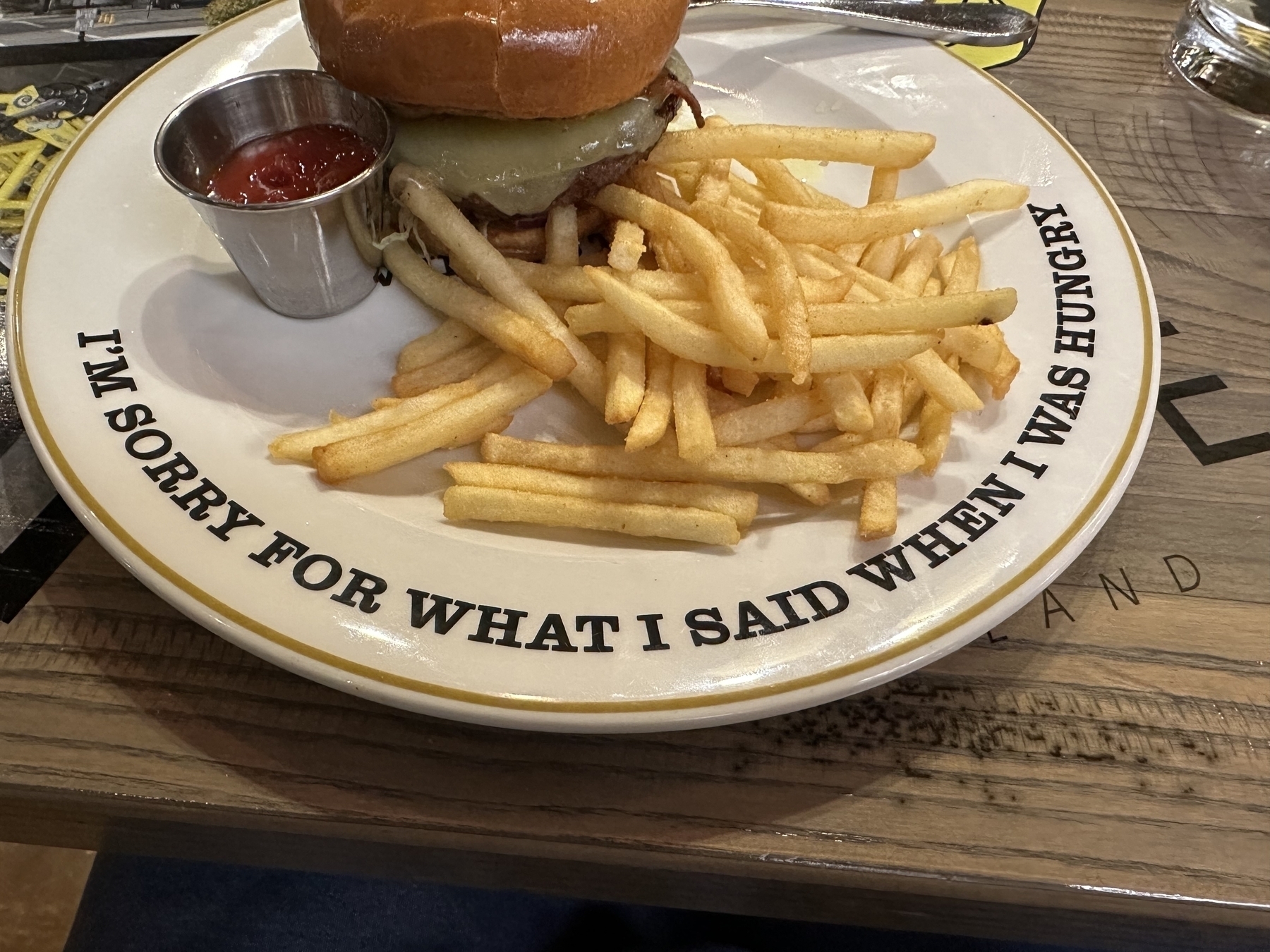
Dinner plates say what we meant to say at Bottle and Kitchen.


Seeing lady comics at a concert hall, not a bad way to spend a night out of town.
Work in progress
I’ve had this sitting prominently in my Muse workspace for a while. Seems like a good time to deploy it now.
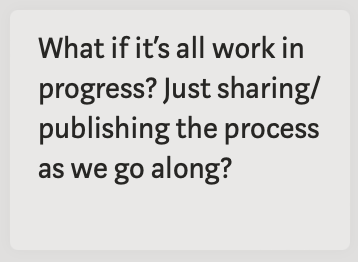
Barry Hess, You’re a Blogger, Not an Essayist:
I’m not going to look down on you for micro-posting on your blog, either. Heck, I might do it myself. I don’t prefer it, though. A blog isn’t Twitter. Just like I don’t think of a blog as something containing 2,000-word, heavily researched posts.
You don’t have to be an essayist. (Though you can be one if you want!) Don’t let those essayists discourage you from blogging.
Just write. Just blog.
Cosign.
Weekend in Portland
Day one, travel day. Air travel is fine. Green carpets are green. It’s cold and dreary, as expected. There may be snow. We persevere.



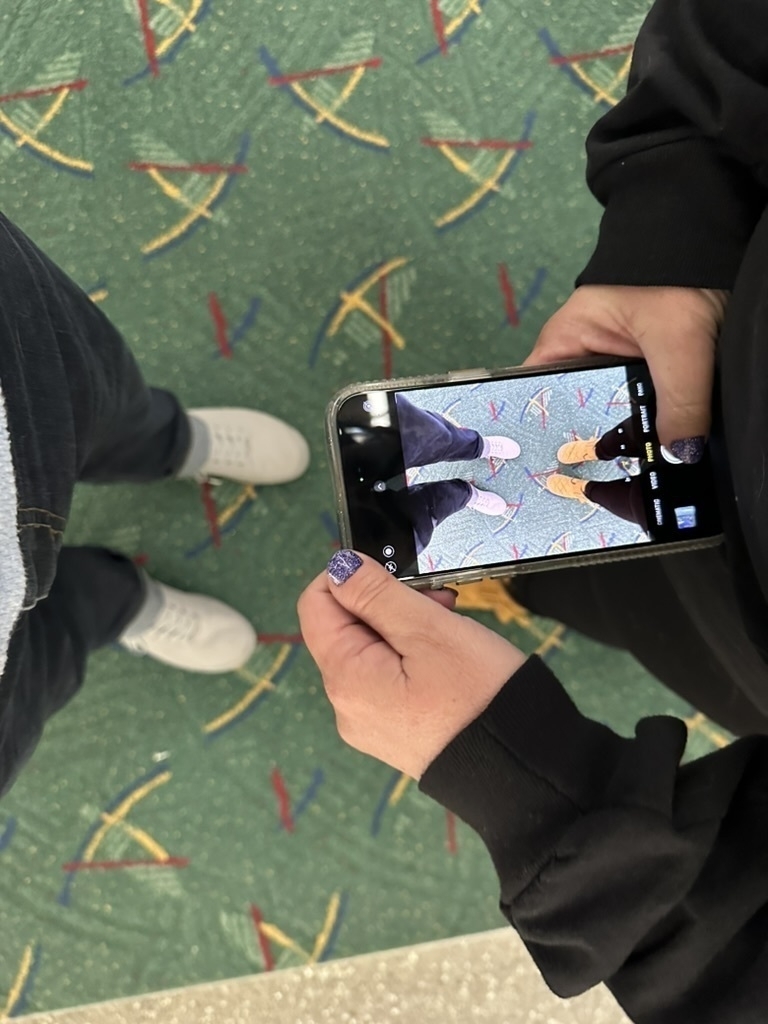
Obsidian + LLMs
My experiments (with obsidian-copilot) have yet to yield a satisfying intersection between LLMs and Obsidian. I generally find OpenAI’s models write too much like breathless clickbait instead of an interesting human. I don’t want a summary or rewrite of my notes generated in that style. For querying/searching/discovery, OpenAI’s notebook-esque web interface is fine.
I’m still hoping to come across something that uses indexing and embedding to help me organize and connect notes I wrote, by my hand, in intriguing and novel ways. 🤞🏻
That said, if you’re already running an LLM locally via llama, obsidian-ollama looks like an excellent way to integrate it into your note-writing/knowledge management scheme. The code of this plugin is easy to follow and nicely structured, making it a good one to look at when the temptation to write Obsidian plugins comes. (Which, for me, arrives as a potential distraction more often than I’d like!) Disclaimer: I haven’t tried this one yet!
Journal for work/life/everything
Ray Grasso, Long Live the Work Journal:
Keep a journal for work, champions.
It’s pretty easy to get started—just create a text file.
Throw in a new heading each day and write down whatever you did—a single line for each task is usually enough. I put the newer dates at the top so it’s less scrolling to get to the most recent content. Over time you end up with your own little private reverse-chronological blog-in-a-file.
Each day, dump in commands you’ve run; links to documents you’ve created, reviewed, or read; tasks you want to get done; or goals you want to achieve.
You’re building a little outboard brain where your work history is just a short grep away.
Endorsed. Journals are the best PKM impact-to-effort ratio out there. I like DayOne, been using it for more than ten years and thousands of entries. But, anything works! Your notes app, a text file, a document in your preferred word processor. Anything you can search later and access anywhere is good!
The most important thing is to turn what’s in your head into “words on paper”. That’s when the magic happens!
The status quo
Most fascinating game there is, keeping things from staying the way they are. – Kurt Vonnegut, Player Piano
The status quo is a hell of a thing. Path dependence makes this a challenging game.
The biggest challenge you could take on in life: change it for even the slightest better. A virtuous challenge too, in an Aristotelian virtues sense?
Low-key CSS libraries
I like the idea and execution of Tailwind. That said, there’s something nice about dropping a CSS library reference into a new HTML file and getting styled content without adding any classes or other legwork.
The nice thing about these libraries is they imagine, to some extent, a world where the stylesheets browsers use as defaults didn’t look so bland.
- new.css – if browser defaults looked real nice
- mvp.css – if browser defaults looked like Bootstrap or the Tailwind examples
- nes.css – if browser defaults said “heck, we’re going with it” and emulated the look of classic Nintendo game menus
- tufte.css – if Edward Tufte had been put in charge of default browser stylesheets
Software makes you more productive, otherwise it’s (weird) art
Rands in Repose, Seven Steps to Fixing Stalled To-Do Tasks:
The never-ending question you must ask regarding whatever productivity system you’ve built is, “Does this system make you more productive?”
The purpose of all this software is to get stuff done (make things), not to fiddle and shuffle tasks around! (This goes for individuals and teams, FWIW)
2023 by the bullets
- Places visited
- Marfa, Texas
- Las Cruces, New Mexico
- Tucson, Arizona
- Disney World (Orlando, Florida)
- Disneyland (Anaheim, California)
- Prunedale, California
- Salinas, California
- Monterey, California
- Dallas, Texas
- Writers enjoyed
- Music re-discovered
- John Coltrane A Love Supreme
- Return to Forever The Mothership Returns
- Concerts attended
- Bruce Springsteen and the E-Street Band,
- Lyle Lovett and his Large Band
- Thundercat
- My best writing
- Previously revisited
Low-key tools-for-thought
I have an elaborate, perhaps baroque, setup of journals, notes, tasks, highlights, read-it-laters, feeds, and canvases-for-thinking. I consider it a crucial, and very idiosyncratic, piece of “knowledge worker infrastructure”. Furthermore, I don’t think I could handle a lot of the work and projects that I do, to the extent that I do, without it.
But, I hope that constructing such a scheme, and doing all the time intensive background research and tinkering, is not something everyone would have to expend effort on to think better and more clearly.
My hunch here is that the software bundled with iOS/iPadOS/macOS is very close to allowing folks who just want to remember and brainstorm get started immediately. Currently, a couple of elements are missing. This means you have to hit the third-party ecosystem escape hatch and consider a daunting variety of applications, workflows, and identity/quasi-religions.
Herein, a wishlist of system-level capabilities that would make macOS an even better “bicycle for the mind”.
In any old macOS app, I want to highlight text (mostly) with any pointer (mouse, stylus, finger) on any device (laptop, tablet, phone) and capture/promote text. I may want to add my commentary or notes too. Afterward, I should be able to search for this in Spotlight, at the least. Even better if the whole document/page/file/etc. the text came from is indexed, so I can find highlights despite imperfect memory.
macOS already extracts contacts and events from plain text. Faces are identified in photos. Why not make text excerpts/highlights/passages a first-class thing in the system’s information architecture?
I want to identify key ideas, concepts, people, and other nouns, so I can hyperlink between them and navigate them in something like the Finder.
This verbs-and-nouns concept was key to AppleScript. I’ve read that it was part of the conceptual bedrock of NeXTStep, but I haven’t found more than a few passing sentences on that.
Why not carry that idea forward or rediscover it on macOS? Some folks want to do more than scroll, post, and transact.
Notes and Journal, along with Finder and Spotlight, seem very close to checking all the boxes here. 🤷🏻♂️I don’t use those apps, so I’m wildly speculating here. Out over my skis, as they say. That said, this is so close to the core of what you really need to do next-level, thinking-augmented-by-computers.
Even though I use very particular apps, I feel like Apple has the right foundations here. A journal app for capturing ideas, reflections, and life as it happens. A notes app for putting structure and organization around the ideas that emerge from those moments. Tie it together with search to resurface and rediscover those journals and notes.
A fellow can dream, right?
iA Writer and AI
Writing is not about getting letters on a page. It’s not about getting done with text. It’s finding a clear and simple expression for what we feel, mean, and want to express. Writing is thinking with letters. Usually we do this alone. With AI, you write in dialogue. It comes with a chat-interface, after all. So, don’t just write commands, talk to it.
iA Writer’s integration is the first use of LLMs I’ve seen that I’d consider original. They didn’t slap on a chat interface where one wasn’t needed. It’s not autocomplete-but-smarter.
Instead, they show authorship/origin of text as either human or machine-generated. As you edit out the AI machine’s writing, the text visually and literally becomes more your own creation. You engage in dialog with the machine and use that to improve your thinking. The machine doesn’t think for you. Bravo!
Celebrate the van Beethoven guy
It’s Ludwig van Beethoven’s birthday. Here are a few ways to celebrate the old piano-biter:
- small: try his other famous piano sonata, No. 8 “Pathetique”
- medium: try the third movement of Piano Concerto No. 5 “Emperor”, wherein the transition from the slow/middle movement into the final/fast movement is a brilliant sneak attack
- large: the pretty good (but mid-tier for Beethoven, IMO) Symphony No. 3 “Eroica” aka the one where he wrote a piece for Napoleon but got mad and renamed it at the last minute
- extra-large: the symphony that changed the game, Symphony No. 9 (the Ode to Joy one)
Previously: Beethoven’s Symphonies No. 7 and 8 are top-tier, Beethoven’s symphonies visualized.
ui.land
ui.land is an interview site at the crossroads of design and engineering.
Trying to create software with tiny details that feel exciting to build, experience, and remix. Ever discovered a website that you can’t stop playing with and obsessing over? You can just sense the thoughtfulness and quality.
- What we call a delightful user experience is just delivering a faster path to user goals.
- You’ll never understand the challenges, tricks, and edge-cases of a note-taking app until you build a note-taking app.
The best interface is one that’s not there because the desired outcome has already been anticipated.
Notes on strategy and execution
Will Larson, How to Size and Assess Teams From an Eng Lead at Stripe, Uber and Digg. This pull-quote lead me through some juicy lines of thinking:
Inflection points are just sustained implementation of a very reasonable thing. Often, the role of the great leader is not to come up with a brilliant strategy, but to convince people to stay the course with a very basic strategy.
Leaders lead folks in exercising a plan or series of plans (i.e. strategy). Basic strategies are almost certain to outperform complex strategies. Complex strategies tend to leak energy and effort at the seams between the basic/legible parts and all the edge cases and exceptions that generate complexity.
Organize for Discovery
S-tier programming skill: organize code and behavior such that others can discover and understand it out later without your presence/consultation.
S-tier writing skill: organize a story or idea within a story such that the reader understands or builds upon it, makes it theirs.
A-tier relationship skill: organize or set stuff down such that your partner can find it later, without needing to ask you where it is. (Riffing off Merlin Mann here, I think.)
Ergo: organizing, and empathizing, are skills worth developing.
Sidestep process by sharing tangible progress
Cannot overstate the value of regularly delivering working software.My single most effective software dev habit is to start with a walking skeleton – a “real” if very stubbed out program that can be deployed on its real infrastructure, receive real calls, visited for real etc. – because of what this does for non-programming stakeholders.
When they see a real working thing and then they see that thing get meaningful improvements they tend to chill way out and get much easier to work with.
You can save a week of effort on process with a couple hours of sharing tangible progress.
Related: you can save a week of planning with a couple hours of programming. You can save a week of programming with a couple hours of planning.
Everything’s a draft
Publish pretty much everything you write because you can’t predict what is going to be popular. There is a lower bar for quality, but barring dishonesty and literally unreadable prose, everything else should go out somewhere. Incompleteness is no excuse. Publish the first part now and the other parts later.
– Kent Beck, Publish Everything
Get the idea out there, especially if it feels like there’s depth to explore but you can’t full traverse it in the moment. And, reduce friction to sharing the promising drafts!